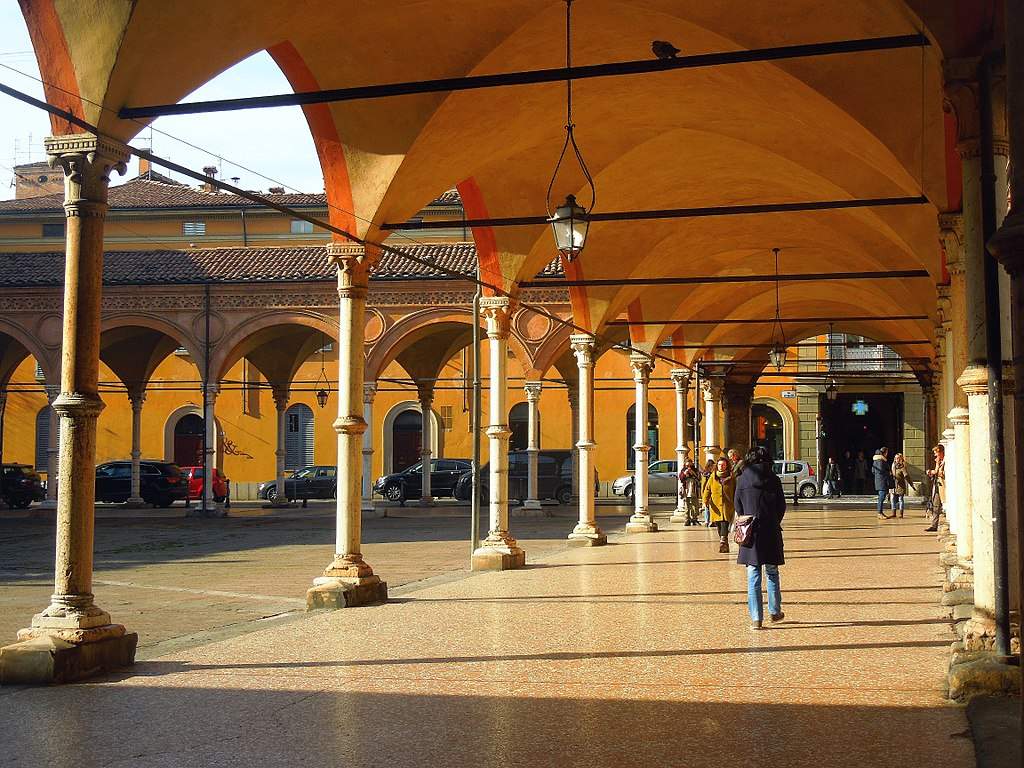Bologna's porticos in contention to become a UNESCO World Heritage Site. Preliminary dossier presented
The path that could lead to Bologna’s porticos becoming a UNESCO World Heritage Site has officially begun. Last September 12, the Municipality of Bologna delivered the preliminary candidacy dossier to the Ministry of Cultural Heritage, which by September 30 will also be forwarded to the international organization. By the end of the year, UNESCO will evaluate the dossier, then, if all goes well, between January and February the Municipality will deliver the final dossier, after which it will only be necessary to wait for UNESCO’s decision, scheduled for 2021.
It took three years of work to arrive at the elaboration of the document, which consists of 400 pages divided into 9 chapters: in 2018, Mayor Virginio Merola had set up a special working group, which availed itself of the collaboration of the Municipality’s Museums and Libraries Institution, as well as the University of Bologna, and the economic support of the Carisbo Foundation, which guaranteed the work a funding of one hundred thousand euros. The dossier contains the first complete plan of Bologna’s porticoes: it resulted in a total of 62 kilometers of porticoes that run along the streets in the heart of the city and in the immediate vicinity (42 kilometers are located in the historic center while 20 kilometers of porticoes are located outside the avenues that occupy the layout of what were once the ancient city walls). The mapping was also made possible thanks to the contribution of the many citizens who, through their reports and photographs, collaborated to census even lesser-known stretches of porticoes that nonetheless meet the characteristics identified for “candidate” porticoes (only those intended for public use were taken into consideration, and not those built only for access to buildings).
The work is not yet finished: in the coming weeks the Municipality, supported by a steering committee coordinated by the Municipality itself (and including the Emilia-Romagna Region, the Metropolitan City of Bologna, MiBAC, the University, the Archdiocese of Bologna, the Carisbo Foundation, the Fondazione del Monte di Bologna e Ravenna, the Chamber of Commerce, the Bank of Italy, the Azienda Casa Emilia-Romagna, the Provincial Command of the Carabinieri and the Bologna Welcome entity), will draw up a management plan for the preservation of the porticos, in compliance with the requirements of UNESCO. The plan is also a coordination tool to effectively protect the universal value of the asset, and will cover not only the arcades, but also the so-called buffer zone surrounding the UNESCO-protected asset. In addition, from September 23 to 27, all citizens will be able to submit their suggestions for the management plan or by showing up from 10 a.m. to 6 p.m. at the office of the Urban Innovation Foundation after sending an email to candidaturaporticiunesco@comune.bologna.it to make an appointment.
Bologna’s porticos are a unique architectural asset that has its origins in the Middle Ages: A place of sociability and at the same time of commerce (in the past, goods sold by the stores were displayed under the porticoes, a function that in several areas of the city the porticoes still fulfill today), the porticoes were “institutionalized” in 1288 with a Statute of the Municipality of Bologna, which stipulated that all houses built from scratch had to be built with a masonry portico in front, and those built previously that lacked one had to have one. Bologna’s porticoes are found in front of houses, palaces, and churches (some very old wooden porticoes are also preserved) and have different widths and heights: the widest is the quadriporticus of the basilica of Santa Maria dei Servi in Strada Maggiore (dating back to the 14th century), the narrowest is a portico located in Via Senzanome and is just 95 centimeters wide, while the tallest is the 13th-century portico of the Archbishop’s Palace, almost ten meters high. Finally, the portico leading from Via Saragozza to the Sanctuary of Madonna di San Luca is very famous: at 3.796 kilometers long, it is the longest portico in the world.
In the photo: the portico of the Servi. Ph. Credit Federico Lugli
 |
| Bologna's porticos in contention to become a UNESCO World Heritage Site. Preliminary dossier presented |
Warning: the translation into English of the original Italian article was created using automatic tools. We undertake to review all articles, but we do not guarantee the total absence of inaccuracies in the translation due to the program. You can find the original by clicking on the ITA button. If you find any mistake,please contact us.




























